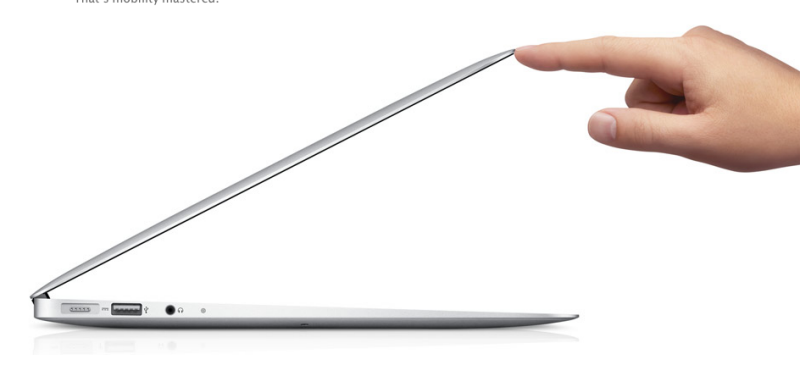Much enhanced.

The 2012 MacBook Air.
My two year old MacBook Air has moved to a happy new home and its replacement arrives tomorrow in the guise of the 2012 model. It has proved trouble free, reliable and a joy to use and rarely gets so hot on your lap that you notice.
I wrote about the 2010 model here concluding that it was a decent, ultra light portable with a fine keyboard and decent Lightroom and Photoshop capabilities.
Once again I have opted for the 11″ model owing to its low weight and handy size, but a little more than related statistics for an iPad. However, this time I opted for 128Gb of SSD rather than the minimum of 64Gb, for an outrageous premium of $100 (market price for 64Gb of RAM is $25) and a total cost of $1,100 delivered from Amazon.
The jump in specifications is non-trivial and confirms again that a two year upgrade cycle on MacBooks and iPads is appropriate. For desktops only a Hackintosh makes sense for my heavy use purposes, and you can read all about the one I use by clicking the Sitemap link at the top of this page. Here are the more obvious changes comparing the 2012 model to the 2010:
- Model MD224LL/A; 2010 is MC505LL/A.
- 4Gb RAM vs. 2Gb
- Low power consumption IvyBridge i5 CPU vs. slower and hungrier Core2Duo
- 1.7GHz CPUclock speed with 2.6GHz boost, compared with 1.4Ghz, no boost
- Backlit keyboard
- Intel HD4000 integrated GPU vs. Nvidia GeForce 320M with 256Mb memory
- HDMI output via adapter vs. none
- 720p HD Facetime camera vs. SD Facetime camera
- Sata3 SSD vs. Sata2 SSD
As before only the 13″ model comes with an SD card slot, so an external USB reader will be needed. Either model requires an external reader if you use CF cards.
Options are very costly and include an i7 CPU for a little more speed (2.0/3.2GHz), 8Gb RAM and a 512Gb SSD. None solve economically for this user.
With an anticipated Geekbench CPU speed score of 6,000 (4Gb RAM) the 2012 model should be some three times as fast on CPU intensive tasks like Lightroom and Photoshop as the 2010 model. That’s a huge increase. Cinebench GPU frame rates should be almost doubled at 18 vs. 10. Another large jump. Disk read/write access should be almost 60% faster, as I noted when upgrading my HackPro’s SSD from SATA2 to SATA3.
In the two years since the 11″ MBA was introduced, it has become the entry level for students everywhere, (at least for those who prefer studying to rebooting their Windows machine) with the white plastic MacBook being discontinued. This is a significant market for Apple both on volume and for first time sales, as many users’ first serious introduction to the Mac ecosystem. Thus it’s no wonder that Apple has not rested on its laurels when improving the model. Last year’s Sandy Bridge model offered a big speed increase and this year’s Ivy Bridge builds on that.
Resale value of the 2010 after two years use is some 65 cents on the dollar, not at all bad for a used computer.
Some first impressions and test data soon when I have unpacked mine.